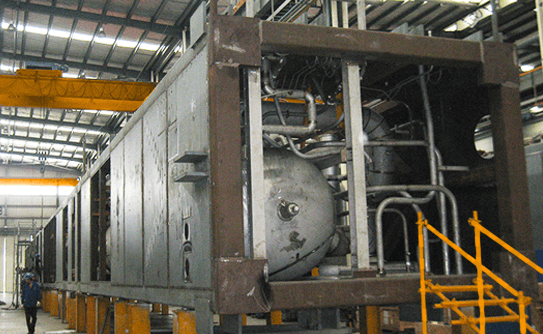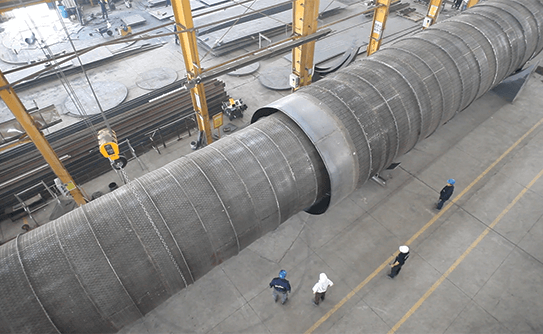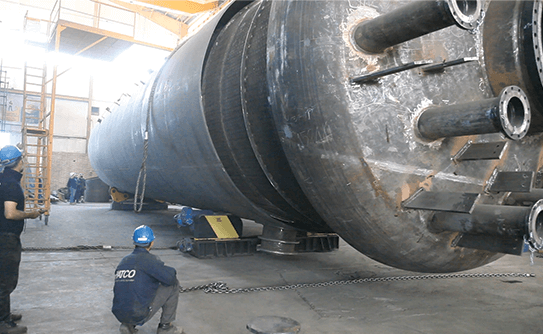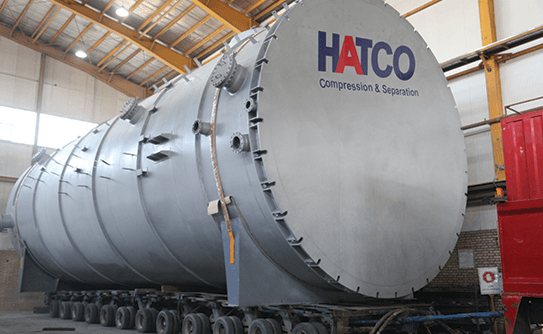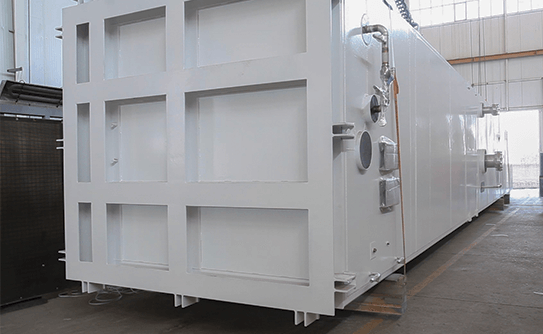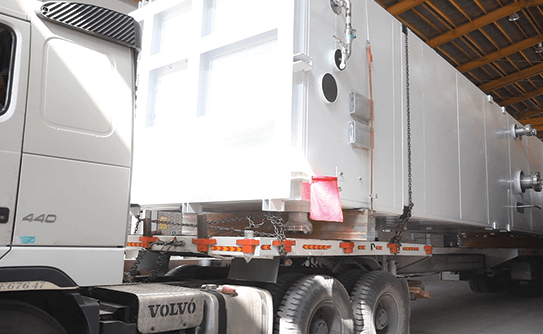Cryogenic Theory:
It is a branch of physics that includes the production conditions and effects of super-cold temperatures. In this case, all equipment must be able to work with these temperatures.
One of the most widely used fields of this branch of science in the field of industry is the production of major industrial gases such as oxygen, nitrogen, argon, etc. by separating them from the air using the boiling point of these gases, which is done on a large scale today.
Air is a mixture of different gases such as N2, O2, He, CO2, Ar, and Ze, each of which has a different condensing temperature. This difference in degrees makes it possible to control each of these gases with very high purity and separate them as a liquid by controlling the temperature of the distillation system.
The resulting liquid is very cold and for transportation and use by transmission lines and equipment, functions such as conversion and phase change, devices, and control systems require special facilities that are among the most advanced technologies in terms of standards, structural, and functional complexity, and safety.
Cryogenic Process:
This method was first invented by a German scientist named Dr. Carl von Linde. Although it is costly in terms of initial investment and energy consumption, due to the high capacity and purity of the product obtained, it is widely used today in many projects that require the production of industrial gases. The purity available in this system is up to 99.999%.
In this process, the air is compressed and after the necessary processing, it is cooled to liquefaction, then these liquids enter the distillation column with different boiling temperatures. This process requires a relatively “significant” range of specific equipment and services.
The steps of this method in a complete cryogenic plant (ASU) are:
1- Air compression
• Compression of ambient air by a multi-stage turbo compressor with intercoolers at a supply pressure of approx. 6 bar.
• Removal of dust particles by a mechanical air filter at the inlet of the compressor.
2- Air cooling and purification
• Cooling of process air with water in a direct contact cooler and removal of water-soluble air impurities.
• Chilling of cooling water in an evaporation cooler against dry nitrogen waste gas from the rectification process.
• Removal of CO₂, water, and hydrocarbons from the process air is periodically loaded/regenerated molecular sieve adsorbers.
3- Cold production and internal product compression
• Cooling of process air in heat exchangers down to nearly liquefaction temperature by means of countercurrent with gas streams from the rectification process.
• Further compression of a side stream of process air by an air booster compressor. Expansion and cold production of the boosted air stream in an expansion turbine.
• Expansion and liquefaction of a side stream of the boosted air in a liquid separator.
• Evaporation and warming to the ambient temperature of the pumped oxygen and nitrogen product in high-pressure heat exchangers.
4- Cryogenic rectification of air
• Pre-separation of the cooled and liquefied air within the pressure column into oxygen-enriched liquid in the column sump and pure nitrogen gas at the column top.
• Liquefaction of the pure nitrogen gas in the condenser/re-boiler against boiling oxygen in the sump of the low-pressure column. Liquefied nitrogen provides the reflux for the pressure column and (after sub-cooling) for the low-pressure column.
• Further separation of the oxygen-enriched liquid within the low-pressure column into pure oxygen in the sump and nitrogen waste gas at the top.
5- Cryogenic rectification of argon
• Argon-enriched gas from the low-pressure column is transformed into oxygen-free crude argon by means of separation within the crude argon column.
• Pumping back liquid oxygen from the crude argon column sump into the low-pressure column. Removal of the remaining nitrogen in the pure argon column.
See the below typical block diagram to understand the general function of this process.
HATCO is fully prepared for providing industrial gas projects such as nitrogen, oxygen, argon, carbon dioxide, etc. in a wide range of capacity from 3 meters up to 10 meters, including all design and engineering plans and details and optimization solutions in terms of construction strategy, operational philosophy and quality assurance.
• Having favorable business relations with outstanding international companies to reach the goal.
• Provide process plans for investment cost optimization (CAPEX) and operating costs (OPEX) depending on customer needs and project requirements on the final product.
• Experienced engineering and project management teams with all the necessary facilities.
• providing all infrastructures for product realization and project execution.
• Modularity of plant components based on the packing of each system/unit and the philosophy of structural communication and integration.


